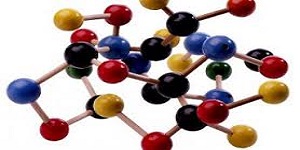
Biopolymer 2019

Theme: Accelerating New Research & Innovations in Biopolymers & Bioplastics
The event on “ 2nd World Congress on Biopolymers and Bioplastics” creates a platform to share and gain knowledge by focusing on the topics of Biopolymers, Bioplastics, Biomaterials, Polymer Science, Plastic Engineering, Tissue engineering and regenerative medicine, Biodegradable polymers, composite materials, polymer nanotechnology, Macromolecular Science. Biopolymer 2019 Conference held during October 21-22, 2019 at London, UK. The main theme is “Accelerating New Research & Innovations in Biopolymers & Polymer Sciences”. Meetings Int. supports comprehensive scope for research and principled review at an extensive variety of specialists all over the world. It will bring together world-class Directors, Professors, Scientists and Researchers to discuss the multidisciplinary field with research and interests covering all aspects of recent Biopolymers and Polymer Science.
The Biopolymers and Bioplasctics Conference shall include prompt keynote presentations, special sessions, workshops, symposiums, oral talks, poster presentations and exhibitions.
1. Different classes of Biopolymers
Biopolymers are classified into different ways based on different scales. Based on their degradability, biopolymers can be divided into two broad groups, namely biodegradable and non-biodegradable, and alternatively, into bio-based and non-bio-based biopolymers. On the basis of their polymer backbone, biopolymers can be classified roughly into the following groups: polyesters, polysaccharides, polycarbonates, polyamides, and vinyl polymers. These groups are again classified into several subgroups based on their origin. Biopolymers can be classified, depending on the nature of the repeating unit they are made of, into three groups: (i) polysaccharides are made of sugars (e.g. cellulose found in plants), (ii) proteins are made of amino acids (e.g. myoglobin found in muscle tissues), and (iii) nucleic acids are made of nucleotides (DNA, genetic material of a given organism). Based on application, biopolymers can be classified as bioplastics, biosurfactant, biodetergent, bioadhesive, biofloculant, and so on.
Related Conferences:
International Conference on Plastic Engineering & Polymer Science, June 25-26, 2019, Tokyo, Japan | 9th Annual Summit on Biomaterials and Biopolymers, July 17-18, Osaka, Japan | International Conference on Polymer Science and Technology, November 25-26, 2019, Miami USA.
Related Societies:
Applied Chemical Engineering Society (ACES),Europe; American Chemical Society, USA; IAENG Society of Chemical Engineering, Asia-Pacific; Division of Polymer Physics, USA; European Federation of Chemical Engineering, Europe; ASME Bioprocessing Equipment, Asia-Pacific; American Chemical Society(ACS), USA; Australian Society of Biochemist, Asia-Pacific; American Physical Society Division of Polymer Physics (APSDPOLY);
2. Synthesis and Characterization of Biopolymers
Polymeric biomaterials are synthetically derived or modified polymers designed for various applications. Engineering the production of novel biopolymers in plants provides a truly bio renewable avenue for their synthesis. Like all polymer industries, these polymers are also produced in bulk and then shaped for a specific end use. Microorganisms also play an important role in producing a huge variety of biopolymers, such as polysaccharides, polyesters, and polyamides which range from viscous solutions to plastics. Their physical properties are dependent on the composition and molecular weight of the polymer. The properties of various biopolymers synthesized by the aid of microorganisms can be tailored by the genetic manipulation of microorganisms, thereby making it suitable for high-value medical application such as tissue engineering and drug delivery.
Related Conferences:
International Conference on Plastic Engineering & Polymer Science, June 25-26, 2019, Tokyo, Japan | 9th Annual Summit on Biomaterials and Biopolymers, July 17-18, Osaka, Japan | International Conference on Polymer Science and Technology, November 25-26, 2019, Miami USA.
Related Societies:
Applied Chemical Engineering Society (ACES),Europe; American Chemical Society, USA; IAENG Society of Chemical Engineering, Asia-Pacific; Division of Polymer Physics, USA; European Federation of Chemical Engineering, Europe; ASME Bioprocessing Equipment, Asia-Pacific; American Chemical Society(ACS), USA; Australian Society of Biochemist, Asia-Pacific; American Physical Society Division of Polymer Physics (APSDPOLY);
3. Structure of Biopolymers & Different characterization techniques
The structure of biopolymers has been a subject of investigation ever since they were discovered. So far, the most accurate methods for structure determination have been X-ray diffraction techniques. These techniques are, however, restricted to crystallizable molecules, and it has not been established if the molecular structure in a crystal is identical to that in solution. Many methods have been developed or adopted to probe biopolymer properties in solution [7]. The composition and sequence of the monomer units of biopolymers determine their so-called primary structure. Conformation, that is, one or another spatial form of the biopolymer molecules, is determined by their primary structure. Depending on the chemical structure and external conditions, the molecules may be in one or more preferred conformations. Most of the techniques used for the characterization of polymers can be utilized for the characterization of biopolymers. Characterization of biopolymers has two purposes: (i) Development of parameters for processing; (ii) Determination of end-use performance characteristics.
Related Conferences:
International Conference on Plastic Engineering & Polymer Science, June 25-26, 2019, Tokyo, Japan | 9th Annual Summit on Biomaterials and Biopolymers, July 17-18, Osaka, Japan | International Conference on Polymer Science and Technology, November 25-26, 2019, Miami USA.
Related Societies:
Applied Chemical Engineering Society (ACES),Europe; American Chemical Society, USA; IAENG Society of Chemical Engineering, Asia-Pacific; Division of Polymer Physics, USA; European Federation of Chemical Engineering, Europe; ASME Bioprocessing Equipment, Asia-Pacific; American Chemical Society(ACS), USA; Australian Society of Biochemist, Asia-Pacific; American Physical Society Division of Polymer Physics (APSDPOLY);
4. Frequently studied Biopolymers in Polyactic Acid, Poly (e-Caprolactone), Gelatin, Starch, Cellulose, Collagen
Polylactic acid or polylactide (PLA, Poly) is a biodegradable thermoplastic aliphatic polyester derived from renewable resources, such as corn starch, tapioca roots, chips, starch, or sugarcane. PLA is obtainable primarily by the ionic polymerization of lactide, a ring closure of two lactic acid molecules. Poly(e-caprolactone) (PCL) is a biodegradable polyester which is commonly used for preparing scaffolds for various tissue engineering applications. It has a low melting point of around 60 °C and a glass transition temperature of about −60 °C. It is used in the manufacture of specialty polyurethanes with good water, oil, solvent, and chlorine resistance. PCL can be used as an additive for resins to improve its impact resistance and their processing characteristics. Collagen is the most abundant protein in human. It is found in the bones, muscles, skin, and tendons, where it forms a scaffold to provide strength and structure. Endogenously produced, collagen plays numerous important roles in health, with the breakdown and depletion of the body’s natural collagen associated with a number of health problems.
Related Conferences:
International Conference on Plastic Engineering & Polymer Science, June 25-26, 2019, Tokyo, Japan | 9th Annual Summit on Biomaterials and Biopolymers, July 17-18, Osaka, Japan | International Conference on Polymer Science and Technology, November 25-26, 2019, Miami USA.
Related Societies:
Applied Chemical Engineering Society (ACES),Europe; American Chemical Society, USA; IAENG Society of Chemical Engineering, Asia-Pacific; Division of Polymer Physics, USA; European Federation of Chemical Engineering, Europe; ASME Bioprocessing Equipment, Asia-Pacific; American Chemical Society(ACS), USA; Australian Society of Biochemist, Asia-Pacific; American Physical Society Division of Polymer Physics (APSDPOLY);
5. Applications of Biopolymers in Packaging, Biomedical, Nanomaterial’s, Water purification
Biopolymers, due to its biocompatible and biodegradable nature, can be used to improve the performances of other biologically active molecules in a product. In recent years, biopolymer materials have aroused great interest because of their biomedical applications, such as those in tissue engineering, pharmaceutical carriers, and medical devices [54, 55]. A common biopolymer, gelatin, was widely applied in medicine for dressing wounds, as an adhesive, and so on. Currently, the most commercially viable materials in food packaging are certain biodegradable polyesters, which can be processed by conventional equipment. These materials are already used in a number of monolayer and multilayer applications in the food-packaging field.
Related Conferences:
International Conference on Plastic Engineering & Polymer Science, June 25-26, 2019, Tokyo, Japan | 9th Annual Summit on Biomaterials and Biopolymers, July 17-18, Osaka, Japan | International Conference on Polymer Science and Technology, November 25-26, 2019, Miami USA.
Related Societies:
Applied Chemical Engineering Society (ACES),Europe; American Chemical Society, USA; IAENG Society of Chemical Engineering, Asia-Pacific; Division of Polymer Physics, USA; European Federation of Chemical Engineering, Europe; ASME Bioprocessing Equipment, Asia-Pacific; American Chemical Society(ACS), USA; Australian Society of Biochemist, Asia-Pacific; American Physical Society Division of Polymer Physics (APSDPOLY);
6. Natural Polymer-Advanced Polymers & its phenomenon
Most of the natural polymers are formed from the condensation polymers and this formation from the monomers, water is obtained as a by-product. Advanced polymer techniques are designed to produce some of the unique products and latest industrial developments and fabrication methods. These methods originate from both industry and academia for the growth of polymer applications and meeting the demands of the future. Natural polymers are liable to be biodegradable, although the rate of degeneration is generally inversely proportional to the extent of chemical modification for Polymeric Materials.
Related Conferences:
International Conference on Plastic Engineering & Polymer Science, June 25-26, 2019, Tokyo, Japan | 9th Annual Summit on Biomaterials and Biopolymers, July 17-18, Osaka, Japan | International Conference on Polymer Science and Technology, November 25-26, 2019, Miami USA.
Related Societies:
Applied Chemical Engineering Society (ACES),Europe; American Chemical Society, USA; IAENG Society of Chemical Engineering, Asia-Pacific; Division of Polymer Physics, USA; European Federation of Chemical Engineering, Europe; ASME Bioprocessing Equipment, Asia-Pacific; American Chemical Society(ACS), USA; Australian Society of Biochemist, Asia-Pacific; American Physical Society Division of Polymer Physics (APSDPOLY);
7. Biopolymers as Materials
Some biopolymers, for example, PLA, normally happening zein, and poly-3-hydroxybutyrate can be utilized as plastics, swapping the requirement for polystyrene or polyethylene based plastics. Polymer Nano composites (PNC) are made of a polymers or copolymers having nanoparticles or Nano fillers dispersed in the polymer matrix. The plastic used for food packaging and non-food applications is non-biodegradable, and also of valuable and scarce non-renewable resources like petroleum. With the current research on exploring the alternatives to petrol and priority on reduced environmental impact, research is increased in development of biodegradable packaging from biopolymer-based materials.
Related Conferences:
International Conference on Plastic Engineering & Polymer Science, June 25-26, 2019, Tokyo, Japan | 9th Annual Summit on Biomaterials and Biopolymers, July 17-18, Osaka, Japan | International Conference on Polymer Science and Technology, November 25-26, 2019, Miami USA.
Related Societies:
Applied Chemical Engineering Society (ACES),Europe; American Chemical Society, USA; IAENG Society of Chemical Engineering, Asia-Pacific; Division of Polymer Physics, USA; European Federation of Chemical Engineering, Europe; ASME Bioprocessing Equipment, Asia-Pacific; American Chemical Society(ACS), USA; Australian Society of Biochemist, Asia-Pacific; American Physical Society Division of Polymer Physics (APSDPOLY);
8. Recent Advances in Polymer Nanotechnology, Polymer Rheology and Polymer Morphology
Recent advances in nanotechnology have made the Nano science a field hot area research, making it one of the most research areas of science in the past two decades. Nano composites are a new class of materials in which the dimension of the dispersed particles occurred at the Nano meter scale. Presents, in a multidisciplinary way, state-of-the-art topics related to polymer science and engineering. Covers composites, nanotechnology, testing and characterization, specialty materials, novelty materials, bio-based materials and applications.
Related Conferences:
International Conference on Plastic Engineering & Polymer Science, June 25-26, 2019, Tokyo, Japan | 9th Annual Summit on Biomaterials and Biopolymers, July 17-18, Osaka, Japan | International Conference on Polymer Science and Technology, November 25-26, 2019, Miami USA.
Related Societies:
Applied Chemical Engineering Society (ACES),Europe; American Chemical Society, USA; IAENG Society of Chemical Engineering, Asia-Pacific; Division of Polymer Physics, USA; European Federation of Chemical Engineering, Europe; ASME Bioprocessing Equipment, Asia-Pacific; American Chemical Society(ACS), USA; Australian Society of Biochemist, Asia-Pacific; American Physical Society Division of Polymer Physics (APSDPOLY);
9. Polymer Chemistry
Polymer Chemistry includes branches which mimic the divisions of the field of chemistry as a whole, with synthetic (preparation methods) and physical (property determination), biological (proteins, polysaccharides, and polynucleic acids), and analytical (qualitative and quantitative analysis) chemistry. Polymers already have a range of applications that far exceeds that of any other class of material available to man. Current applications extend from adhesives, coatings, foams, and packaging materials to textile and industrial fibers, elastomers, and structural plastics. Polymers are also used for most composites, electronic devices, biomedical devices, optical devices, and precursors for many newly developed high-tech ceramics. This new book presents leading-edge research in this rapidly-changing and evolving field.
Related Conferences:
International Conference on Plastic Engineering & Polymer Science, June 25-26, 2019, Tokyo, Japan | 9th Annual Summit on Biomaterials and Biopolymers, July 17-18, Osaka, Japan | International Conference on Polymer Science and Technology, November 25-26, 2019, Miami USA.
Related Societies:
Applied Chemical Engineering Society (ACES),Europe; American Chemical Society, USA; IAENG Society of Chemical Engineering, Asia-Pacific; Division of Polymer Physics, USA; European Federation of Chemical Engineering, Europe; ASME Bioprocessing Equipment, Asia-Pacific; American Chemical Society(ACS), USA; Australian Society of Biochemist, Asia-Pacific; American Physical Society Division of Polymer Physics (APSDPOLY);
10. Bioplasctics
A plastic material is defined as Bioplastics. If it is either biobased, biodegradable or features both properties. In Bioplastics, some uses a microorganism to process base materials, such as oils, starch, cellulose, acids and alcohols. By using microorganisms we can made agricultural by-products and also from used plastic bottles and other containers. . Common plastics, such as fossil-fuel plastics are derived from petroleum or natural gas. . Production of such plastics tends to require more fossil fuels and to produce more greenhouse gases than the production of biobased polymers (bioplastics).Almost all Bioplastics produce less carbon dioxide in production, they are not necessarily completely green. There are so many bioplastics also release carbon dioxide and monoxide when biodegrading .Biodegradable plastics can break down in either anaerobic or aerobic, depends on the manufacturing.
Related Conferences:
International Conference on Plastic Engineering & Polymer Science, June 25-26, 2019, Tokyo, Japan | 9th Annual Summit on Biomaterials and Biopolymers, July 17-18, Osaka, Japan | International Conference on Polymer Science and Technology, November 25-26, 2019, Miami USA.
Related Societies:
Applied Chemical Engineering Society (ACES),Europe; American Chemical Society, USA; IAENG Society of Chemical Engineering, Asia-Pacific; Division of Polymer Physics, USA; European Federation of Chemical Engineering, Europe; ASME Bioprocessing Equipment, Asia-Pacific; American Chemical Society(ACS), USA; Australian Society of Biochemist, Asia-Pacific; American Physical Society Division of Polymer Physics (APSDPOLY);
11. Recycling Processing in Plastic Engineering and Waste Management
For courses in Plastics, Materials and Manufacturing found in departments of mechanical, industrial or manufacturing technology or engineering; also for any beginning course in Plastics in engineering or technology programs. New classes of polymeric materials with unique applications are being introduced. In many cases, the properties and their usage were discovered only recently. This chapter covers two areas: health, medicine, and biotechnology, a rapidly developing domain based largely on known materials but moving to designed and engineered polymers, and information and communications, an emerging field for polymers significantly based on their electronic properties. These two areas are attracting a great deal of attention, particularly among researchers who are not traditional specialists in polymer science.
Related Conferences:
International Conference on Plastic Engineering & Polymer Science, June 25-26, 2019, Tokyo, Japan | 9th Annual Summit on Biomaterials and Biopolymers, July 17-18, Osaka, Japan | International Conference on Polymer Science and Technology, November 25-26, 2019, Miami USA.
Related Societies:
Applied Chemical Engineering Society (ACES),Europe; American Chemical Society, USA; IAENG Society of Chemical Engineering, Asia-Pacific; Division of Polymer Physics, USA; European Federation of Chemical Engineering, Europe; ASME Bioprocessing Equipment, Asia-Pacific; American Chemical Society(ACS), USA; Australian Society of Biochemist, Asia-Pacific; American Physical Society Division of Polymer Physics (APSDPOLY);
12. Environmental Issues of Recycling and Sustainability Models
Although reprocessing has been a part of society since the starting, we have only recently started to acknowledged the amount of an ecological effect our industrialization is leaving on natural resources. Recycling occurs at both household and industrial level, and it takes on many various forms. Sometimes, it is purely reusing a product for a different purpose, like creating a cup holder out of an old piece of newspaper. Then again, recycling also happens on a much bigger scale, where a product is fully broken down on a chemical level and repurposed. While both are on opposite sides of the spectrum, each one does its part to conserve our environment.
Related Conferences:
International Conference on Plastic Engineering & Polymer Science, June 25-26, 2019, Tokyo, Japan | 9th Annual Summit on Biomaterials and Biopolymers, July 17-18, Osaka, Japan | International Conference on Polymer Science and Technology, November 25-26, 2019, Miami USA.
Related Societies:
Applied Chemical Engineering Society (ACES),Europe; American Chemical Society, USA; IAENG Society of Chemical Engineering, Asia-Pacific; Division of Polymer Physics, USA; European Federation of Chemical Engineering, Europe; ASME Bioprocessing Equipment, Asia-Pacific; American Chemical Society(ACS), USA; Australian Society of Biochemist, Asia-Pacific; American Physical Society Division of Polymer Physics (APSDPOLY);
13. Biodegradable Polymers & Biocomposite Materials
Global warming, the growing awareness of environmental and waste management issues, dwindling fossil resources, and rising oil prices: these are some of the reasons why “bio”products are increasingly being promoted for sustainable development. Biopolymers can be classified in two ways: according to their renewability content (fully or partially bio-based or oil-based) and to their biodegradability level (fully or partially or not biodegradable). Moreover, recent technological breakthroughs have substantially improved the properties of some bio-based polymers, such as heat resistant polylactic acid, enabling a wider range of applications. In addition, plants are being optimized, especially to provide bio-fibres with more stable resource properties over time.
Related Conferences:
International Conference on Plastic Engineering & Polymer Science, June 25-26, 2019, Tokyo, Japan | 9th Annual Summit on Biomaterials and Biopolymers, July 17-18, Osaka, Japan | International Conference on Polymer Science and Technology, November 25-26, 2019, Miami USA.
Related Societies:
Applied Chemical Engineering Society (ACES),Europe; American Chemical Society, USA; IAENG Society of Chemical Engineering, Asia-Pacific; Division of Polymer Physics, USA; European Federation of Chemical Engineering, Europe; ASME Bioprocessing Equipment, Asia-Pacific; American Chemical Society(ACS), USA; Australian Society of Biochemist, Asia-Pacific; American Physical Society Division of Polymer Physics (APSDPOLY);
14. Future and Scope for Biopolymers and Bioplastics
In search of novel Advanced Materials solutions and keeping an eye on the goal of sustainable production and consumption, Bioplastics have several (potential) benefits. The use of renewable resources to produce bioplastics the key for increasing resource productivity, the resources can be cultivated on an (at least) annual basis, the principle of cascade use, as biomass can primarily be used for materials and then for energy generation, a reduction of the carbon footprint and GHG egressions of some materials and products-saving fossil fuels in many resources, and for substituting them step by step. Biobased polymeric materials are closer to the reality of replacing conventional polymers than ever before. The bioplastics are about fifty year old, at present days, biobased polymers are commonly found in many applications from commodity to hi-tech applications due to advancement in biotechnology and public awareness.
Related Conferences:
International Conference on Plastic Engineering & Polymer Science, June 25-26, 2019, Tokyo, Japan | 9th Annual Summit on Biomaterials and Biopolymers, July 17-18, Osaka, Japan | International Conference on Polymer Science and Technology, November 25-26, 2019, Miami USA.
Related Societies:
Applied Chemical Engineering Society (ACES),Europe; American Chemical Society, USA; IAENG Society of Chemical Engineering, Asia-Pacific; Division of Polymer Physics, USA; European Federation of Chemical Engineering, Europe; ASME Bioprocessing Equipment, Asia-Pacific; American Chemical Society(ACS), USA; Australian Society of Biochemist, Asia-Pacific; American Physical Society Division of Polymer Physics (APSDPOLY);
- Different classes of Biopolymers
- Synthesis and Characterization of Biopolymers
- Frequently studied Biopolymers in Polyactic Acid, Poly (e-Caprolactone), Gelatin, Starch, Cellulose, Collagen
- Applications of Biopolymers in Packaging, Biomedical, Nanomaterial, Water purification
- Natural Polymer-Advanced Polymers & its phenomenon
- Recent Advances in Polymer Nanotechnology, Polymer Rheology and Polymer Morphology
- Polymer Chemistry
- Biopolymers as Materials
- Bioplasctics
- Recycling Processing in Plastic Engineering and Waste Management
- Environmental Issues of Recycling and Sustainability Models
- Biodegradable Polymers & Biocomposite Materials
- Future and Scope for Biopolymers and Bioplastics
- Journal of Polymer Science & Applications
- Journal of Chemistry and Applied Chemical Engineerig
- Journal of Biochemical Engineering & Process Technology
6 Organizing Committee Members
7 Renowned Speakers
Xiaobin Zhao
Director, Future Business Cambridge Centre
UK
Andrej Holobar
CEO,ECHO instruments
Slovenia
Christiane Waldron
Business Development Director
USA
Davis L. Ford
Professor, University of Texas at Austin
USA
Jingjing Xu
Researcher, Shandong University
China
Niloufar RaeisHosseini
Honorary Research Fellow, Imperial College London
UK
Lavinia Balan
Senior Researcher, CNRS
France

































































































































